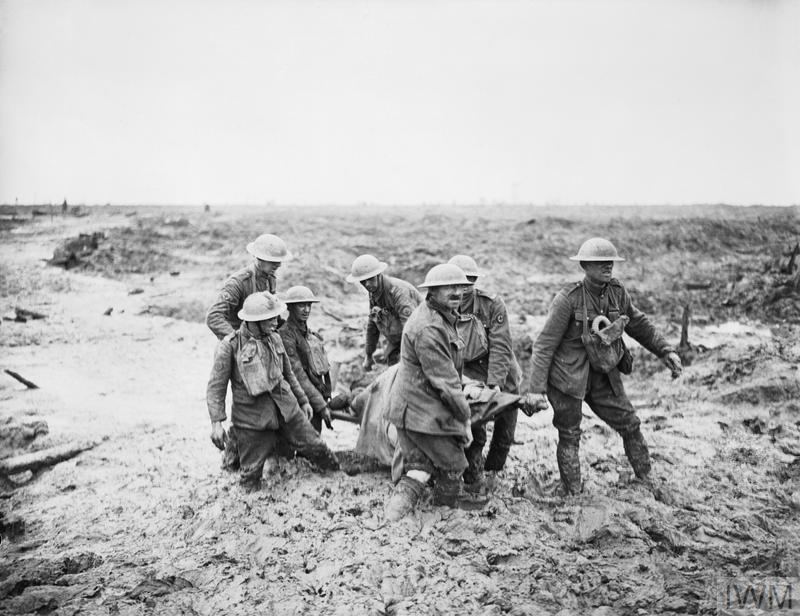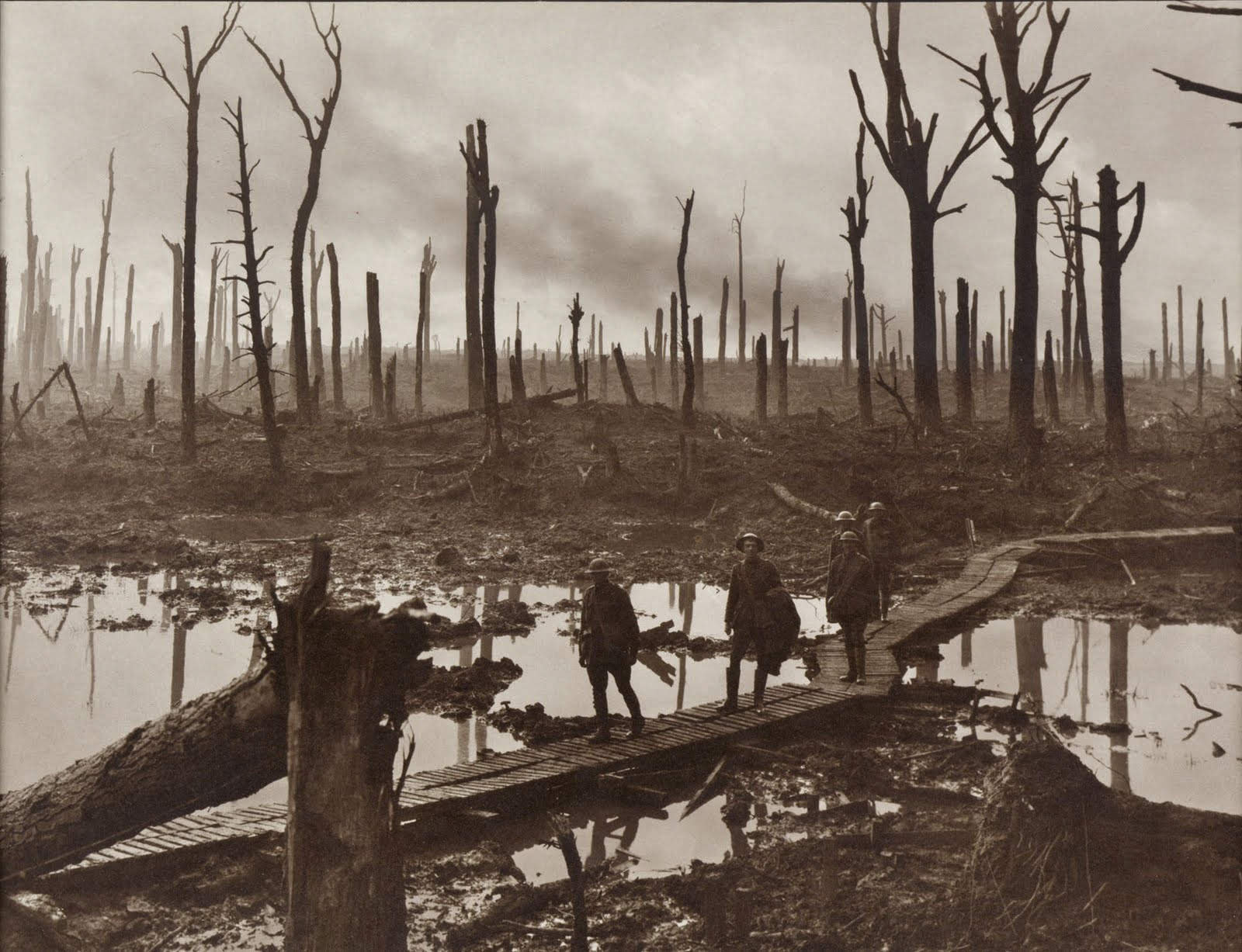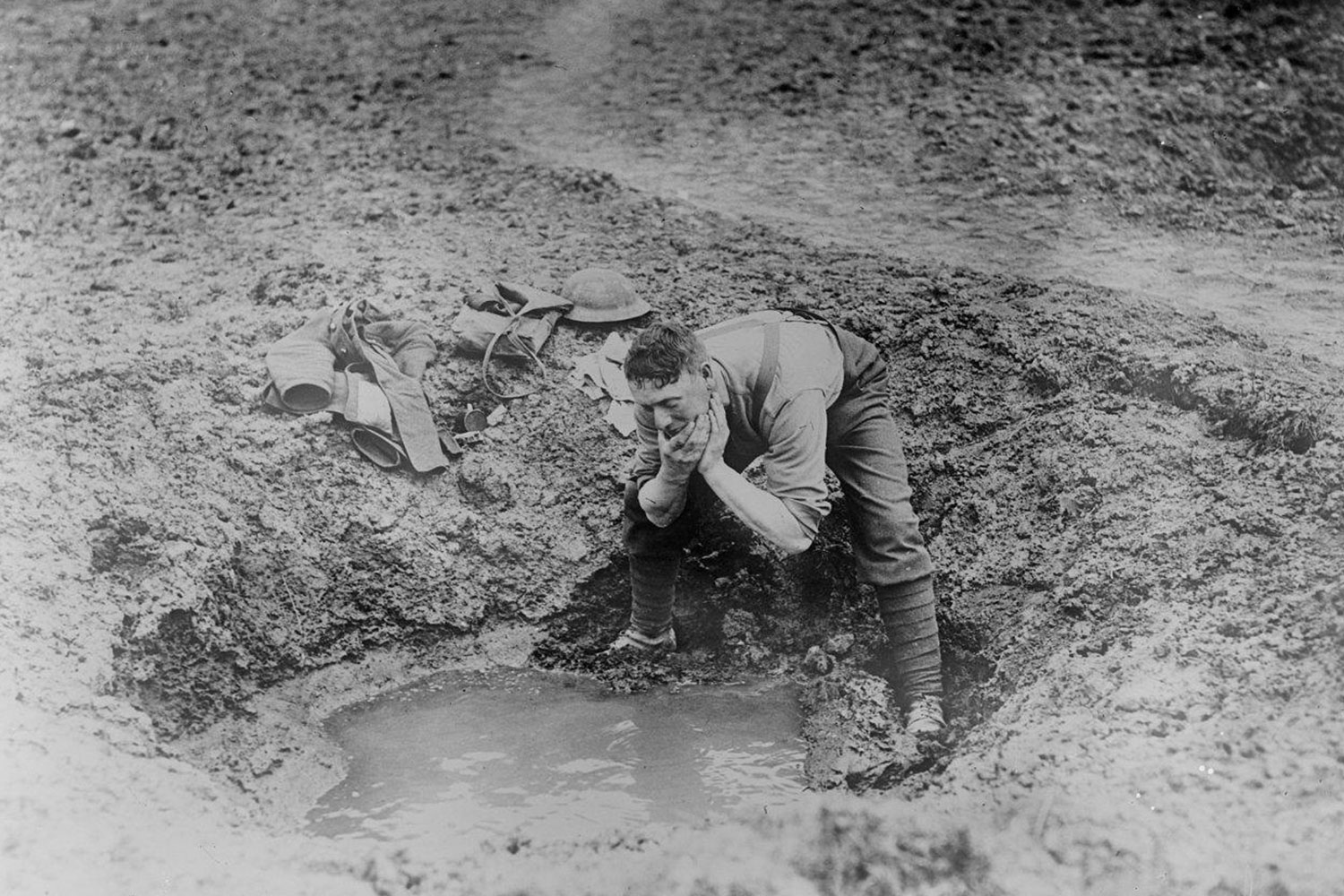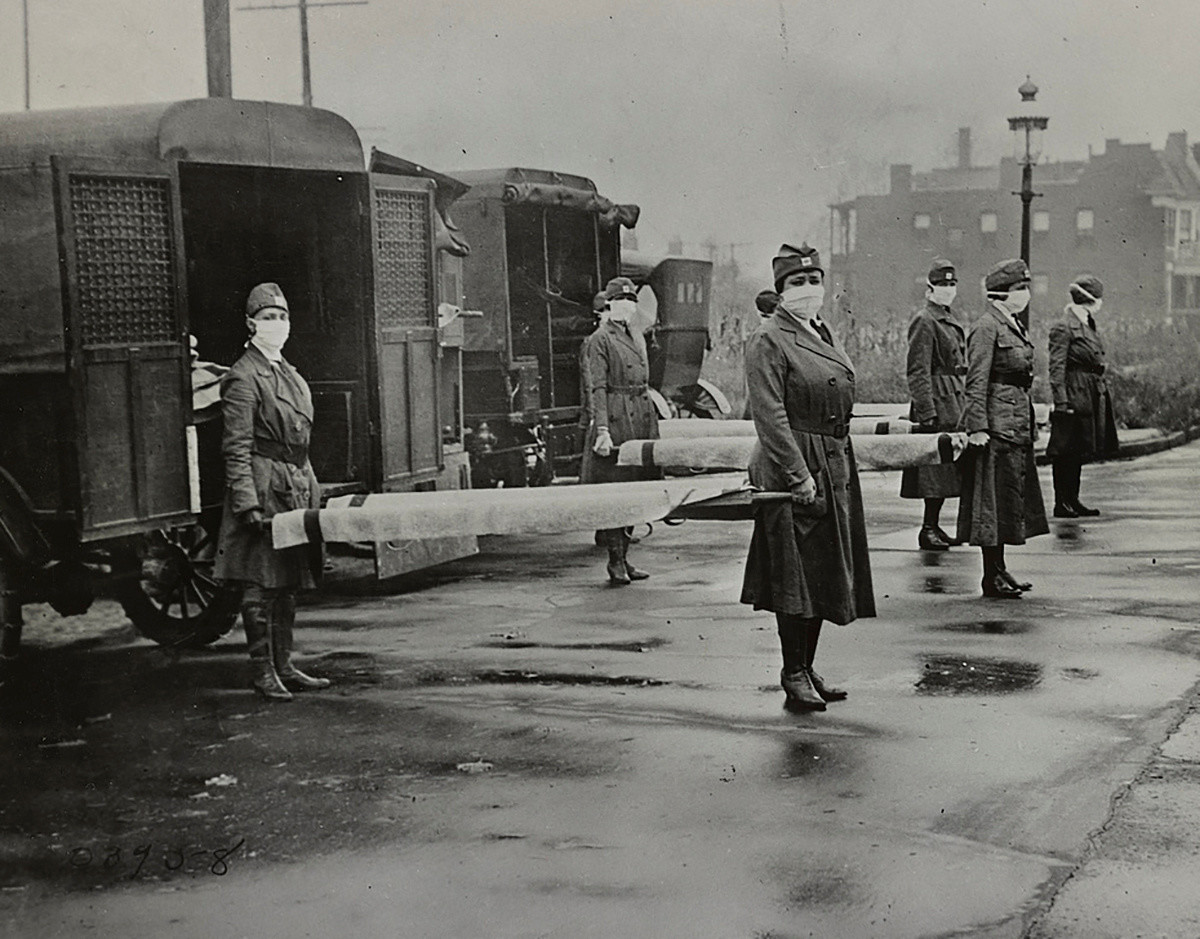
Stretcher-bearers struggle through mud to carry a wounded man near Boezinge, Belgium, on Aug. 1, 1917. [Lieut. John Warwick Brooke/IWM/Q-5935]
The First World War is synonymous with torrential rain, deathly deep mud and bitter cold. It seems no stalemate or major battle was without these added miseries that brought with them disproportionate infection, disease and death.
Now a new scientific study says a once-in-a-lifetime climate anomaly is to blame for the horrendous weather that contributed to hundreds of thousands of battlefield deaths and the 1918 Spanish flu (H1N1) pandemic that cost tens of millions of lives worldwide.
The eight scientists from universities at Cambridge, Mass.; Nottingham, England; and Orono, Maine, found their evidence in core samples of glacial ice taken from the Swiss and Italian Alps. Traces of sea salt found in the samples indicate the highest influx of cold marine air from the North Atlantic in a century during the years 1914-19.
The findings, presented at the annual meeting the American Geophysical Union (AGU) on Sept. 15, have particular relevance to two major forces at work in the world today: climate change and the COVID-19 pandemic.
“[The] history of the Spanish Influenza from 1917 to 1919 sends a warning into our own time.”
“The contribution of environmental change and human action to pandemic morbidity, mortality, and diffusion cannot be underestimated,” warns the paper, titled The Impact of a Six‐Year Climate Anomaly on the ‘Spanish Flu’ Pandemic and WW I.
“Indeed, the pandemic development history of the Spanish Influenza from 1917 to 1919 sends a warning into our own time, a century later, of the ongoing risks of war zones (including the use of chemical weapons), wildlife trade, unsanitary conditions, and humanitarian crises as incubators of disease, assisted by climate‐change triggers.”

Australian soldiers use duckboards to pass through Chateau Wood, near Hooge in the Ypres Salient on Oct. 29, 1917. [Frank Hurley/Australian War Memorial Collection/E01220]
The team of climatologists and archeologists cited studies showing how extreme weather shaped major battles such as Verdun (1916-1917), the Somme (1916), the Chemin‐des‐Dames (1917), and the Third Battle of Ypres, known better in Canada as the Battle of Passchendaele (1917).
“The glaciochemical and instrumental records corroborate historical accounts of torrential precipitation on the battlefields of WW I—resulting in increased casualties due to drowning, exposure, pneumonia, and other infections—and its severity may have significantly altered the migration patterns of birds such as the mallard duck, the primary reservoir for the H1N1 avian influenza virus.”
Nearly 20 million people died during the war—9.7 million military and 10 million civilian. About one in seven Allied and one in 10 German soldiers succumbed to disease, an actual improvement over previous wars thanks to medical science.
The constantly wet and muddy conditions exacerbated problems such as trench foot and frostbite; in summer, they bore disease. The sucking mud of the European battlefields impeded the recovery and rescue of wounded soldiers. Many drowned or died of exposure and pneumonia.
The researchers found the first significant anomalies occurred in the spring of 1914 and winter 1914-1915, with concurrent increases in precipitation and death in December 1914 through February 1915.
The Spanish flu claimed between 50 and 100 million lives.
“Historical accounts of the Defense of Festubert (November 1914 to May 1915) and the First Battle of Champagne (December 1914 to March 1915) highlight the impact of intensifying precipitation on British, French, and German military operations,” they wrote.
“Newly dug trenches and tunnels filled with rainwater, as bitter cold temperatures caused thousands to endure frostbite at night, while mud slowed down the movement of troops and artillery during the day.”
The evidence of marine air in the ice cores was highest in the layers corresponding to the summer and autumn of 1915 and winter of 1915-16. Concurrent precipitation records show an increase from the spring of 1915 to December 1916, with only short interruptions in July-August and December 1915.
Extreme precipitation and winter conditions reached as far as Gallipoli, Turkey, in November 1915, famously affecting ANZAC, British and Newfoundland troops embroiled in one of the longest and deadliest campaigns of the war.

A British soldier washes in stagnant water in a shell crater. [Bibliothèque nationale de France]
Extended winter conditions delayed the start of the Chemin‐des‐Dames offensive until April 1917 and caused widespread harvest failures, resulting in the “turnip winter” of 1916-17, during which failed potato and cereal harvests forced the blockaded German population to resort to a diet of root vegetables. Hundreds of thousands died from malnutrition, including 80,000 children. Over the course of the entire war, 750,000 Germans starved to death.
“After a brief respite, rain and cold returned again in the summer and autumn of 1917, with widespread flooding of the trenches in the Third Battle of Ypres (Passchendaele) in July-November, often bringing military operations to a standstill and substantially increasing casualties.”
The Spanish flu claimed between 50 and 100 million lives, including 2.8 million in Europe.
Research into the causes of the pandemic has recently focused on British recruitment of troops in Asia in the spring of 1917. The recruits were brought to Canada, then taken by ship across the Atlantic to England. It is considered one of the most likely routes of transmission.
A viral infection can be as high as 60 per cent in mallard populations.
Several studies have also suggested the use of chlorine gas on WW I battlefields could have caused the virus to mutate into its most virulent form.
“The environmental and especially climatic conditions in which the pandemic developed have received less attention in the scientific literature, even though historical accounts universally describe abnormally high precipitation and cold temperatures in the years preceding the onset of the pandemic, in 1917, and during its deadliest wave in 1918,” said the new paper.
The coincidence between increased precipitation and death highlights the role environmental conditions factored in its spread and related deaths, the paper said.
“The influx of torrential rain accompanied by decreasing temperatures in the autumns of 1917 and 1918 provided ideal conditions for the survival and replication of the virus. Prolonged exposure to decreasing temperatures may also have been a factor in increasing pneumococcal co‐infections, which recent studies have found to be more common in the WW I years than previously thought.”

American Red Cross Motor Corps workers and ambulances wait to receive influenza patients in St. Louis, Missouri, in 1918. [Library of Congress/Associated Press]
“The transfer of H1N1 influenza virus from animals (avian and mammals) to humans (zoonosis) occurs primarily via water sources contaminated with fecal droppings from infected birds,” said the paper. A viral infection can be as high as 60 per cent in mallard populations during the fall.
The scientists said crises of the past and present highlight the growing need for “robust local and global public health and environmental agencies, such as [the Centers for Disease Control, the World Health Organization and the United Nations Environment Programme], dedicated to reducing the risk that climate change will aggravate epidemic outbreaks.”
“The role of climate anomalies such as the one described in this study must be assessed in relation to more recent pandemics such as COVID‐19.”
The ACU is made up of 62,000 earth, atmospheric, ocean, hydrologic, space and planetary scientists from 144 countries.
Advertisement


















